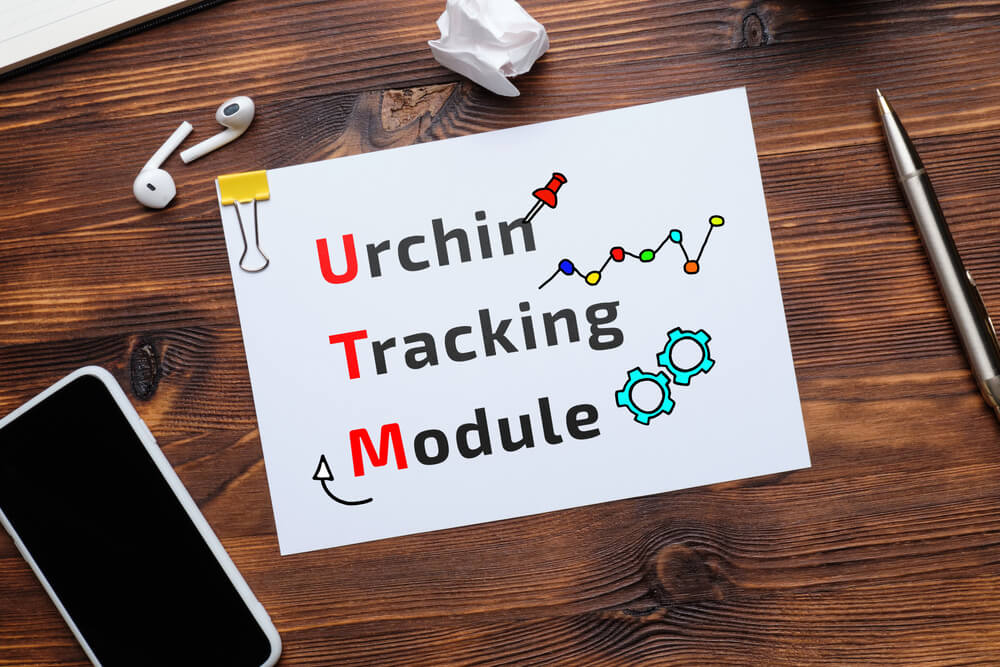
Secrets of UTM: A Powerful Way to Enhance PPC Campaigns
Digital marketing relies on urchin tracking module (UTM) parameters to track campaign performance. UTM parameters tag URLs to reveal PPC campaign performance.
Website traffic and conversions can be accurately tracked to help marketers determine which campaigns, channels, and keywords work best. UTM parameters enable data-driven budget optimization, targeting, and decisions.
An experienced PPC agency reveals the secrets of UTM, which we highlight in this guide:
- Structured naming conventions.
- Integrating UTM with Google Analytics.
- Leveraging UTM for A/B testing.
- Using UTM for content and ad optimization.
- Streamlining multichannel campaign tracking.
We also cover UTM tag best practices and common mistakes. Let's go!
If you want to learn how Digital Authority Partners can increase your PPC effectiveness, watch this video!
Demystifying UTM Parameters
UTM parameters are essential in digital marketing to track and analyze the effectiveness of various online campaigns. They provide valuable insights into the traffic sources, allowing marketers to understand the specific channels, campaigns, or keywords that drive engagement and conversions.
Understanding UTM Parameters
The five primary UTM parameters are source, medium, campaign, term, and content. These enable marketers to more accurately attribute specific activities to their respective campaigns.
By capturing this information, marketers are able to clearly understand the performance of various marketing initiatives to facilitate informed decision-making and targeted optimizations.
Let us focus on the key UTM components:
- Source: Indicates the origin of the traffic, identifying the specific platform, website, or network that directed the user to the destination URL.
- Medium: Specifies the marketing medium through which the link was shared. This may be through email marketing, social media marketing, or CPC (cost-per-click) advertising, providing insights into the different channels driving traffic.
- Campaign: Helps marketers differentiate various campaigns or promotions to track the performance of each specific marketing initiative.
- Term: Specifies the keywords associated with the ad, enabling marketers to monitor the effectiveness of different keywords and optimize their PPC strategies as appropriate.
- Content: Allows marketers to differentiate between various versions of the same ad, enabling them to test different ad creatives, calls to action (CTAs), or content variations.
By incorporating these UTM parameters into their URLs, marketers gain a comprehensive understanding of their marketing efforts' performance, accurately attributing traffic and conversions.
The Significance of UTM in PPC
UTM parameters are crucial in enhancing the precision of tracking and analytics in PPC campaigns. By providing detailed information about the sources, mediums, and specific parameters of each campaign, UTM tags enable marketers to properly attribute website traffic and conversions, gaining valuable insights into the effectiveness of their marketing initiatives.
This precise tracking facilitates a comprehensive analysis of campaign performance, allowing marketers to optimize their strategies, allocate resources efficiently, and refine targeting efforts for improved ROI and overall campaign success.
Using UTM tags significantly improves ROI for marketing campaigns. These enable correct attribution by tracking sources and mediums, facilitating resource allocation. Marketers can optimize strategies and budgets by analyzing UTM data.
Data gathered from UTM tags refine PPC targeting efforts by providing understanding responsive audience segments. This leads to tailored messaging and higher conversion rates. Finally, leveraging UTM data enhances campaign performance, engagement, and ROI for marketing investments.
Secrets to Leveraging UTM Parameters in PPC Campaigns
Marketers have to consider the following to effectively use UTM parameters for PPC campaigns:
1. Structured UTM Naming Conventions
Consistent naming conventions assist in organizing and ensuring accurate tracking and analysis of PPC marketing, such as local PPC campaigns. They facilitate streamlined data interpretation, permitting marketers to quickly identify and compare the performance of various campaigns, sources, and mediums.
With structured UTM naming conventions, marketers can categorize and manage their data, leading to more efficient decision-making and improved campaign performance. Here are some great tips for creating clear and organized UTM naming structures:
- Use a consistent format for all UTM parameters, ensuring uniformity and making it easier to interpret and compare data across different campaigns.
- Include descriptive labels to provide clear information about the campaign source, medium, and content for easy identification and analysis.
- Utilize standardized abbreviations and terms to maintain clarity and uniformity throughout the UTM naming structure.
- Incorporate data and campaign-specific identifiers in the UTM naming structure to distinguish between campaign changes and track performance over time.
Finally, establish and document guidelines for UTM naming conventions to make sure that all team members follow the same structure. This facilitates seamless collaboration and data analysis.
2. Integrating UTM with Google Analytics
To set up UTM parameters to work seamlessly with Google Analytics, marketers have to make certain of the correct attachment of UTM tags to their URLs. The Google Analytics dashboard has a section called “Acquisition” that allows marketers to view traffic data associated with UTM parameters.
The “Campaigns” and “All Traffic” tabs on Google Analytics further analyze the performance of campaigns and gain valuable insights into the effectiveness of marketing initiatives. Extracting useful data from integrated PPC tracking requires strategic approaches. These strategies may help:
- Define clear goals and set up goal tracking on Google Analytics to monitor specific actions and conversions.
- Create customized reports on Google Analytics to focus on key metrics and performance indicators.
- Use segmentation analysis on Google Analytics to dissect data by various parameters such as demographics, behavior, and geography to better understand the preferences and behaviors of different audience segments.
- Implement conversion attribution modeling on Google Analytics to determine the impact of various touchpoints on conversions.
Marketers also need to conduct regular performance reviews and data analysis to track the progress of campaigns over time. Doing so allows them to identify trends, make data-driven decisions, and continuously refine their strategies for improved results.
3. Leveraging UTM for A/B Testing
UTM parameters support effective A/B testing in PPC campaigns by providing the ability to track and analyze the performance of different variations. Marketers can use UTM tags to differentiate between the various versions of their ads, landing pages, or marketing campaigns, allowing precise tracking of the performance of each variation.
With the data collected from UTM-tagged URLs, they could measure the success of different A/B testing experiments. They are able to identify the most effective elements and make data-driven decisions to optimize PPC strategies for improved campaign performance.
Setting up UTM parameters for testing requires careful planning and implementation. Consider using the following strategies:
- Differentiate UTM parameters for each variation, ensuring that the tags accurately reflect the specific elements compared in the A/B testing.
- Maintain a consistent UTM structure across all tested variations to make sure of uniformity and streamline data analysis, making it easier to compare and interpret the results of A/B tests.
- Document the UTM parameters for each A/B testing variation, including the specific elements tested and the corresponding UTM tags.
- Look at the data from UTM-tagged URLs for each A/B testing variation for a full picture of how well each tested element worked.
- Refine and optimize A/B testing strategies based on the insights gained from the UTM-tagged data. Use the results to make informed decisions and improve the overall effectiveness of PPC campaigns.
4. Using UTM for Content and Ad Optimization
UTM data helps optimize ad copies, creatives, and landing pages by providing insights into the performance of these specific elements. Marketers can use UTM parameters to track the engagement and conversion rates of different elements to identify the most effective messaging and design elements.
Analyzing the data from UTM-tagged URLs helps marketers refine their content, adjust their ad creatives, and tailor landing pages to better resonate with their audience. Iterative improvements based on UTM insights in PPC campaigns can enhance ad performance. Expert PPC agencies use these techniques:
- Analyze UTM data to identify trends and patterns, make informed decisions, and implement iterative improvements to PPC campaigns.
- Refine ad copies, creatives, and landing page content based on the UTM insights, tailoring messaging, and design elements to better resonate with the target audience and improve campaign performance.
- Use UTM data to segment the audience based on their behavior and preferences to customize messaging and targeting strategies for different audience segments.
Continuously track the performance of campaigns using UTM insights and make necessary adjustments to strategies, budgets, and targeting approaches. This maximizes the impact of PPC efforts and achieves better results over time.
5. Streamlining Multichannel Campaign Tracking
One of the ways companies get their marketing messages across is by adopting a multichannel campaign. This might be challenging, but UTM parameters help streamline multichannel campaign tracking by providing a unified approach to monitoring the performance of marketing initiatives.
Marketers may use UTM tags to correctly attribute website traffic and conversions. This allows a comprehensive analysis of the effectiveness of various marketing channels. By leveraging UTM parameters, they can gain valuable insights into the performance of each channel and optimize their strategies for improved performance.
Here are strategies to assist marketers in improving multichannel PPC campaign tracking using UTM data:
- Implement a centralized system for tracking and organizing UTM-tagged data across all marketing channels.
- Establish consistent naming conventions for UTM parameters for streamlined data analysis and comparison across different channels.
- Create customized reports that integrate data from all marketing channels using UTM parameters. This creates a holistic view of the overall campaign performance.
- Utilize UTM-tagged data to perform cross-channel data comparisons, identify trends and patterns across different marketing channels, and assess the effectiveness of each channel.
Finally, conduct regular performance reviews and data analysis to track the progress of unified campaigns over time. Regular reviews help identify areas for improvement and make data-driven decisions to optimize strategies across all marketing channels.
Common Mistakes to Avoid
When tracking the effectiveness of marketing campaigns with UTM parameters, precision is key. Missteps in parameter use leads to skewed data and misinterpretation, undermining the very purpose of analytics. Here are some common mistakes and best practices for clear, actionable data:
- Inaccurate tracking. Avoid inconsistencies in UTM usage to prevent misinterpretation of data. Ensure uniformity across the team to gain reliable insights.
- Over-tagging. Do not overuse UTM parameters. This leads to lengthy, complex URLs, negatively affecting user experience and click-through rates.
- Standardization. Implement standardized naming conventions for UTM parameters and conduct regular audits to ensure compliance and correct discrepancies.
- Templates. Use pre-defined UTM templates for various campaigns to minimize errors and maintain consistency in formatting and naming.
- Training. Invest in ongoing team education on UTM best practices, stressing the importance of precise and consistent tracking for effective campaign analysis and decision-making.
Summing Up
Using UTM parameters can significantly elevate the performance of PPC campaigns by providing valuable insights, precise tracking, and accurate attribution of conversions. With UTM parameters, marketers are able to optimize their budget allocation, refine targeting strategies, and tailor ad creatives to specific audience segments.
Implementing these secrets and best practices helps marketers gain a comprehensive understanding of their campaign performance, make data-driven decisions, and refine strategies to achieve better results.
PPC campaign management and optimization are often challenging. It is excellent to know that a trusted PPC agency has your back. Contact Digital Authority Partners (DAP) for expert PPC help today.
Want To Meet Our Expert Team?
Book a meeting directly here





